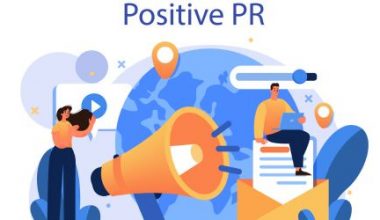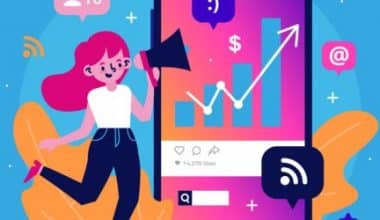In today’s digital era, businesses understand the significance of crafting their own storyline rather than depending on traditional media. This entails managing the channels and platforms they own and utilize for disseminating content, such as websites, blogs, and social media profiles. The concepts of owned media, earned and owned media, and paid earned-owned media are pivotal in digital marketing and branding strategy. It is crucial to comprehend the distinctions between these concepts for a successful marketing approach. In this article, I will review the best strategies and examples of owned media.
Key Points
- Owned media (O.M.) and earned and paid-earned-O.M are pivotal in digital marketing and branding strategy.
- Owned media refers to any digital assets owned and managed by a brand, such as a blog, website, or social media profiles.
- The greater the number of O.M. channels a business possesses, the broader its digital presence becomes, leading to increased potential reach to customers and followers.
- Social media channels are an excellent way for businesses to create and distribute content.
- Email marketing is an effective O.M. strategy to help businesses promote new content, product updates, email-exclusive offers, and courses to their subscribers.
- Forums remain effective in building and sustaining communities.
- State-O.M are typically media outlets owned, operated, or significantly influenced by the government.
What is Owned Media?
One of my clients, a small fashion brand, struggled to gain online visibility despite having a strong social media presence. They relied heavily on their Instagram account to reach their target audience but were not seeing the desired results. So, I recommended they start creating owned media channels, such as blogs and newsletters, to complement their social media efforts.
We started by creating a blog on their website, where they could publish articles related to fashion, lifestyle, and their brand story. We also created a monthly newsletter that would be sent out to their subscribers, featuring exclusive content, promotions, and product launches. The results were impressive. Within a few months, their website traffic had increased significantly, and their email list had grown by over 20%.
Owned media refers to any digital assets owned and managed by a brand, such as a blog, website, or social media profiles. The greater the number of O.M. channels a business possesses, the broader its digital presence becomes, leading to increased potential reach to customers and followers. Examples of O.M. that a brand controls include a company blog, newsroom, self-hosted videos, webinars, and email marketing campaigns. However, before creating content or channels for your brand, it’s essential to consider potential pitfalls.
Best Strategies and Examples of Owned Media
As a fellow business owner, I understand the need to take control of the channels and platforms we used to share our message with the world. This involves managing our websites, blogs, and social media profiles to ensure we are maximizing their potential. Here are some of the best strategies and examples of O.M:
#1. Website, Blog, App
Mobile apps and websites are also essential for organizations to distribute content. These platforms are the primary source for businesses to establish their brand identity and are usually the first avenue for publishing their content. Additionally, they can function as a press room, newsroom, information repository for their audience, or a medium to direct traffic to gated or third-party content.
#2. Email Marketing
Another effective O.M. strategy is email marketing, which can help businesses promote new content, product updates, email-exclusive offers, and courses to their subscribers. Email marketing acts as a web property that goes out to the audience with a call to action to improve brand recall.
#3. Forums
Although forums have lost their popularity because of the advent of social media platforms, they remain effective in building and sustaining communities. Businesses can develop forums and initiate content distribution and community-building activities using self-hosted forum software.
#4. Social Media Presence
Social media channels are an excellent way for businesses to create and distribute content. Brands can create official profiles, pages, groups, and communities to interact with their audience on various social media platforms. However, social media is not owned by organizations and is subject to the rules and terms of service of the platforms. Thus, it is considered a shared medium, and businesses often use the term PESO (paid, earned, shared, and owned) to refer to the various types of media.
Checklist For Owned Media
It’s also worth noting the symbiotic relationship between owned and earned media. The more owned media you publish on your site, the higher the likelihood of it being republished by others. Subsequently, this may increase the chances of your brand being noticed by the press and potentially receiving coverage in their publications. Therefore, it’s advisable to prioritize the creation of content within your control and maximize efforts to elevate your O.M
State Owned Media

State-owned media are typically understood as media outlets owned, operated, or significantly influenced by the government. They are distinguished from public-service media, designed to serve the public interest, operate independently of government control, and are financed through public funding, licensing fees, and sometimes advertising. The crucial difference lies in the level of independence from government influence and the commitment to serving a broad public interest rather than the interests of a specific political party or government agenda.
State-owned media also refers to media entities that are administered, funded, managed, or directly controlled by the government of a country. Three factors that can affect the independence of state media over time are funding, ownership/governance, and editorial autonomy. These entities can range from being completely state-controlled, where the government has full control over their funding, management, and editorial content, to being independent public-service media, which, despite receiving government funding, operate with editorial autonomy and are governed by structures designed to protect them from direct political interference. State media is often associated with authoritarian governments that use state media to control, influence, and limit information.
Earned and Owned Media
Owned media consists of content you produce and oversee, such as your social media profiles or personal websites. On the other hand, earned media encompasses content others generate about you, such as reviews or posts on platforms like Instagram. This differentiation highlights the distinction between the content you have direct control over and the content created by others to engage with your brand or persona.
Paid Earned Owned Media
Paid media involves content you pay to reach an audience through advertisements or sponsorships, while owned and earned media are obtained without direct payment. Owned media involves the content you produce and manage, such as your Facebook page or personal website, allowing you to control and customization. On the other hand, earned media encompasses content created by others to engage with your brand or persona, such as reviews or posts on social media platforms like Instagram. This distinction highlights the varying levels of control and origination of the content within your brand or personal representation.

What Is an Example of an Owned Media Ad?
An example of an O.M. ad is a promotional post on your company’s official Facebook page. This type of content is O.M. because you have full control over what is posted and how it is presented to your audience. Other examples of O.M. include company websites, where businesses have complete control over the content and design; blogs managed and published by the company; and organic social media posts generated by the company’s official accounts without paid promotion.
What Are the 3 Owned Media Platforms?
#1. Company Websites
Company websites represent a critical component of a business’s digital presence. As proprietary digital assets, they are entirely under the control and management of the company itself. This control extends to every aspect of the website, including the content it hosts, its structural layout, and the design of its user interface. Serving as a primary source of information, company websites offer insights into the business’s nature, its product or service offerings, and other essential details relevant to stakeholders. The autonomy over the website allows the company to tailor its online presence according to its strategic objectives, ensuring that the message conveyed to visitors aligns with the brand’s identity and goals.
#2. Company-Managed Blogs
Blogs created and managed by the company are another form of O.M. Businesses also utilize company-managed blogs as proprietary media. These blogs disseminate industry insights, company news, and valuable content to their audience. By overseeing their blogs, companies can dictate the message and branding conveyed to their audience.
#3. Organic Social Media Posts from Official Company Accounts
Organic social media posts from official company accounts, shared on platforms like Facebook, Twitter, and LinkedIn, allow companies to engage with their audience without paying advertising. These posts are not boosted or sponsored, allowing companies to share updates, interact with their audience, and showcase their products or services through their official social media channels.
Is Email Owned Media?

Yes, Email is an Owned Media. O.M. refers to the channels a company has complete control over, such as email marketing campaigns, blogs, and other content created and promoted by the company. This media type can be a powerful tool for businesses to engage with their audience and build brand awareness, as they have full control over the messaging and distribution. While O.M. is distinct from earned media generated through external sources such as press coverage, companies can combine both approaches for a more comprehensive content marketing strategy. With the right balance of earned media, businesses can create a cohesive brand identity that resonates with their target audience and drives engagement and conversions.
Is Instagram Owned Media?
You may not have ownership of social media platforms like Facebook, Twitter, Instagram, TikTok, and LinkedIn. Your social media pages are still considered your O.M. This means you have complete control over the content you post on your accounts and can decide what kind of information you want to share with your audience. As the owner of your social media pages, you are responsible for creating and publishing original content.
Furthermore, by utilizing your O.M. wisely, you have the opportunity to forge strong, meaningful relationships with your followers. Engaging with your audience through comments, messages, and feedback creates a two-way communication channel that can foster a sense of community and loyalty among your followers. This interaction not only enhances your relationship with your audience but also provides valuable insights into their preferences and needs, allowing you to tailor your content more effectively.
Related Post
Corporate Communications: Strategies to Amplify Your Brand’s Message
Social Media Etiquette: Best Practices






